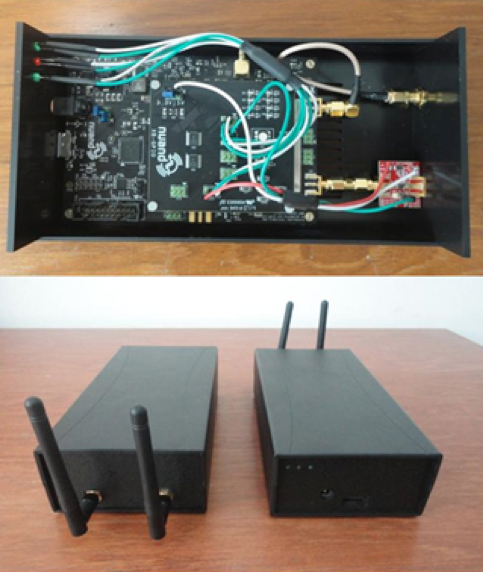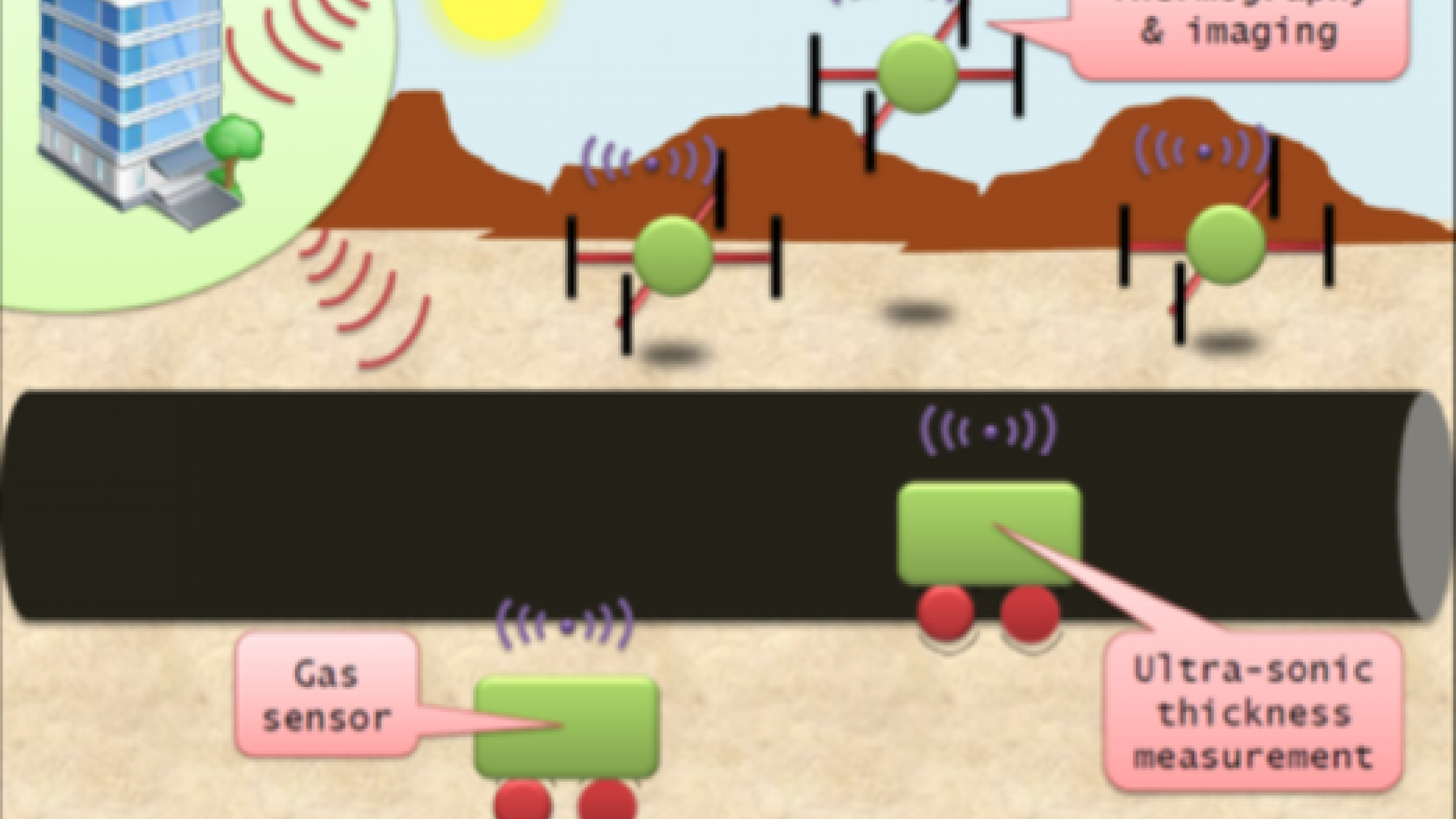In contrast to conventional cellular networks, devices in wireless multihop networks have dual roles: while each device is a source of information it also acts as a router for its peers [1]. Passing information from a source to its respective destination (i.e. packet routing) is a collective effort by all means. Identifying the most efficient route is crucial for creating a reliable and fast network. Depending on the underlying application, devices in a multihop network may be interconnected to a backbone communications infrastructure or maybe running in autonomous mode.
Two of the most prominent forms of wireless multihop networking are wireless sensor networks and mobile ad hoc networks. Lately, wireless sensor networks are being increasingly considered for use cases demanding high bandwidth, low latency, and possibly spanning large geographical areas [2]. On the other hand, the need for mobile ad hoc networking is emerging beyond classical intelligent transportations systems (ITS) applications. It is being considered in novel areas such as mobile workforce, unmanned vehicles, and swarms of robots [3,4].
Recognizing some of these challenges, a specific family of packet routing techniques has emerged over the past decade: beaconless geo-routing [5,6]. As the name suggests, a beaconless geo-routing protocol relies on geographical position criteria to construct routing decisions. Furthermore, it is beaconless in the sense that wireless devices need not exchange routing information (i.e. beacons) on a periodical basis. Nevertheless, existing beaconless geo-routing packet routing protocols typically experience performance degradations with increasing levels of mobility or very frequent changes in the network topology (i.e. when links between nodes are very dynamic). Furthermore, the underlying protocol overhead grows exponentially with the size of the network or the density of devices per unit area. Therefore, the end-to-end latency performance drops very quickly [7].
With the objective of addressing those shortcomings, Dr. Ahmed Bader of the Communication Technology Lab (CTL) at KAUST has been leading the efforts to develop a novel alternative geo-routing paradigm [7]. Under the umbrella of the KAUST strategic research initiative on uncertainty quantification (SRI-UQ) and the co-supervision of CTL Principal Investigator, Prof. Mohamed-Slim Alouini and SRI-UQ international collaborator Prof. Karim Abed-Meraim of Polytech Orléans, France, a fully-distributed beaconless geo-routing scheme came to fruition. The scheme is mainly differentiated by:
1) High tolerance for mobility
2) Indifference to the underlying deployment density
3) Accommodation of large geographical areas
4) Superior end-to-end latency performance
The developed routing scheme has been built with a cross-layer design mindset and is mainly characterized by the following:
1) Uses orthogonal frequency division multiplexing (OFDM) at the physical (PHY) layer.
2) Fully distributed, i.e. routing decisions are made locally at each device without the need for coordination with neighboring devices [8].
The developed geo-routing scheme can be viewed as a cornerstone of a robust wireless multihop networking protocol. Use cases are abundant and encompass:
1) Geo-physical data acquisition in oil and gas fields
2) Asset integrity monitoring, asset inspection, and smart metering [9]
3) Mobile workforce and law enforcement
4) Crowd management, infotainment, and edutainment for large crowds
5) Autonomous clusters of unmanned terrestrial and aerial vehicles
With funding from the Economic & Technology Development at KAUST, Dr. Bader has managed the efforts to develop with CodinTek (a hardware & software services and solutions company based in Tunis, Tunisia) a testbed composed of 20 units. The objective of this testbed was to evaluate the developed paradigm under real-life scenarios. A complete protocol stack encompassing physical (PHY), medium access control (MAC), and routing layers have been built from scratch on FPGA-based hardware. A lengthy field-testing campaign has been conducted and promising results have been obtained. The group is now engaged in fine-tuning the design based on lessons learned from the field.
References:
1. I. F. Akyildiz and X. Wang. Wireless Mesh Networks. Vol. 3. John Wiley & Sons, 2009.
2. I. F. Akyildiz and M. C. Vuran. Wireless Sensor Networks. Vol. 4. John Wiley & Sons, 2010.
3. I. F. Akyildiz, T. Melodia, and K. R. Chowdhury. "A survey on wireless multimedia sensor networks." Computer Networks, vol. 51, no. 4, pp. 921-960, April 2007.
4. I. Bekmezci, O. K. Sahingoz, and S. Temel. "Flying Ad-hoc Networks (FANETs): A survey." Ad Hoc Networks, vol. 11, no. 3, pp. 1254-1270, April 2013.
5. J. A. Sanchez, P. M. Ruiz, and R. Marin-Perez. "Beacon-less Geographic Routing Made Practical: Challenges, Design Guidelines, and Protocols." IEEE Communications Magazine, vol. 47, no. 8, pp. 85-91, August 2009.
6. A. Bader, K. Abed-Meraim, and M. -S. Alouini, "Beaconless Geo-Routing Under The Spotlight: Practical Link Models and Application Scenarios," To Appear in IEEE Systems Journal, 2015.
7. A. Bader, K. Abed-Meraim, and M. -S. Alouini, "An Efficient Multi-Carrier Position-Based Packet Forwarding Protocol for Wireless Sensor Networks," IEEE Transactions on Wireless Communications, vol. 11, no. 1, pp. 305-315, January 2012.
8. A. Bader, K. Abed-Meraim, and M.-S. Alouini, "A Fully Distributed Geo-Routing Scheme for Wireless Sensor Networks," IEEE Sensors Journal, vol.13, no. 12, pp. 4585-4586, Dec. 2013.
9. A. Bader, K. Abed-Meraim, and M. -S. Alouini, "Optimized Beaconless Geo-Routing for Smart Utility Networks," IEEE Sensors Journal, vol.13, no. 12, pp. 4587-4588, Dec. 2013.
10. A. Bader, K. Abed-Meraim, and M. -S. Alouini, "Reduction of Buffering Requirements: Another Advantage of Cooperative Transmission," To Appear in IEEE Sensors Journal, 2015.

Figure 2: A proof-of-concept platform has been developed by KAUST CTL and CodinTek. An embedded system hosting a complete protocol stack has been built to evaluate the developed routing scheme under real-life application scenarios.


